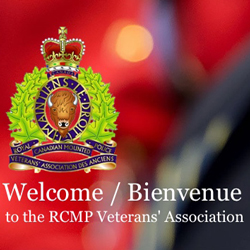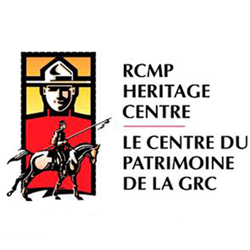Insp. Robert Belcher
Robert Belcher distinguished himself both within the Force and in his activities after retiring.
As this tribute will outline, Robert Belcher participated in most of the historical events in the Force’s history from the March West to the Boer War.
EARLY YEARS
Robert Belcher was born on April 23, 1849 at London England and was the son of Robert Tovey Belcher. In 1868 and at the age of 19, he joined the 9th Lancers (Queen’s Royal) which was a cavalry regiment in the British Army and was assigned the rank of Trooper. He remained with the 9th Lancers until he departed to Canada and joined the new North-West Mounted Police.
JOINS THE FORCE
On November 3, 1873 at Lower Fort Garry, he was sworn into the ranks of the North-West Mounted Police and assigned the rank of a Corporal.
The skills and abilities that he acquired with the 9th Lancers became quite evident and resulted in his promotion to Sergeant on May 16, 1874. When the Force commenced the March West on July 8, 1874, Robert Belcher was in “A” Troop and was commanded by Inspector William Jarvis, Sub-Inspector Severe Gagnon and Chief Constable Sam Steele. Within two days of commencing the March West, Robert Belcher was promoted to the rank of Staff Sergeant.
In these early years in the Force, the friendship between Sam Steele and Robert Belcher grew and persisted over the next 30 years.
The first record of John Belcher’s contribution to the Force was noted on September 2, 1874. “A corps of lancers chosen from the several troops, made up of 20 picked men under Robert Belcher and Tom Miles, were formed to assist the lagging convey, also to impress any Indians who might appear. The lances, adorned with pennants, had been provided especially for such a purpose.”[1]

Robert Belcher continued to train and educate members of the Force in mounted precision drill. He was reputed to have been an excellent swordsman. Under his leadership and direction, he is credited in organizing the first display of mounted precision horsemanship in 1876 at Fort MacLeod. This type of precision riding would become a key component of the Force and would later be known as the “RCMP Musical Ride.”
When free time became available, Robert Belcher was actively involved in promoting sporting activities amongst the Force members. “In the same year (1879), cricket was introduced at ‘G’ Division, Fort Saskatchewan by Sgt. Major Bobbie Belcher, a former English public school boy.”[2]
On November 3, 1882 at Fort Saskatchewan, Robert Belcher decided not to re-engage in the Force. Instead, he applied for and received a Land Grant of 150 acres in the Fort Saskatchewan area. Obviously being a settler was not as glamorous as being in the Force. Consequently, he re-engaged on June 1, 1884.
At the time of the North-west Rebellion, he was stationed in Regina and held the rank of a Sergeant Major. However, he was deployed to Fort Battleford under the command of Inspector W.D. Antrobus. During his time at Fort Battleford in 1885, Robert Belcher “was commended for his service.”[3] Unfortunately, he did not actually receive his North-West Rebellion medal until February 12, 1902.[4]
 North-West Rebellion over, Depot Division was created as the Force’s headquarters and primary training center.
North-West Rebellion over, Depot Division was created as the Force’s headquarters and primary training center.
“The creation of ‘Depot’ enabled the Commissioner to revive the position of senior NCO of the Force. By a General Order of April 1886, the sergeant major of ‘Depot’ Division became ex-officio regimental sergeant major (RSM). The first to hold the office was RSM Robert “Bobbie’ Belcher who had served in the 9th Lancers before coming to Canada and joining the Force as an ‘original’ in 1873. The RSM was to be a key figure in the maintenance of discipline and the smooth running of the training program. Of this august personage, one recruit of the time wrote: ‘He carried a world of weight about the place.” [5]
The tone of accountability and discipline became a hallmark of Regimental Sergeant Major Robert Belcher. In 1886, Constable Charles Dwight described the atmosphere in Depot. Dwight “was ‘disgusted’ by the unjust and arbitrary system of discipline he encountered as a recruit in Regina. He soon ran afoul of Regimental Sergeant Major Belcher, who he described later as ‘repugnant personage’, and ended up in the Orderly Room on a charge. There he found the punishment was often meted out according to the whim or ‘humour’ of those in authority without considering ‘any explanation which might be offered on the defence.’ Within a few weeks, Dwight was very anxious to leave the NWMP.”[6]
In 1888, Robert Belcher married Margaret McLeod (B: 1856). They eventually had 6 children.
In 1892, John Belcher enquired with Commissioner Herchmer about the possibility of being commissioned to the rank of Inspector. According to John’s correspondence to the Commissioner, he had been repeatedly recommended for a Commission since 1876. With the support of the Commissioner, John Belcher was promoted to the rank of Inspector on January 23, 1893.
QUEEN’S DIAMOND JUBILEE
With the celebrations of Queen Victoria’s Diamond Jubilee schedule for June 22, 1897, there was a push by members of Parliament and by the Commissioner to have a contingent of Force members to participate in the Diamond Jubilee parade. After much consideration, Sir Wilfrid Laurier agreed that 25 Force members would be included in the 200 member Canadian Contingent being sent to London.
The Force’s participation in this parade would be the first international appearance of the NWMP. Many editorials had been written in England about the achievements of the NWMP in the Canadian West. It was important to Commissioner Herchmer that this initial presence of the NWMP in London be favourable in the eyes of the other Imperial regiments.
To provide the most impressionable image of the Force, the Commissioner set out to select the ideal members. Supt. A.B. Perry would lead this delegation and would be assisted by Inspector Robert Belcher.
By the end of April 1897, twenty-three members were selected. The chosen members were all: young, trim, handsome, 5’10” to 6’0” in height, average waist of 35 inches, average chest of 39 inches and most sported long waxed mustaches which were considered dashing at the time.[7]
Commissioner received approval for new uniforms to be worn by the NWMP delegation: prairie suits, cowboy hats and overalls with elastic sided boots and box spurs for walking out.

Inspector Robert Belcher was delegated to oversee the shipment of all NWMP horses which were being shipped to London. Following the celebrations, the horses would be turned over to the British Army.
At Buckingham Palace on July 5, 1897, the Prince of Wales presented all members of the Canadian Contingent with a Queen Victoria’s Diamond Jubilee medal.[8]
KLONDIKE GOLD RUSH
With the outbreak of the Klondike Gold Rush, the Mounted Police quickly increased their numbers and established NMWP posts at key locations. One of these locations was at the top of the Chilkoot Pass. In 1898, Inspector Robert Belcher was placed in charge of this post.[9] Having been a Regimental Sergeant Major, he was not one to be intimidated by the rowdy Americans pouring into Yukon.
BOER WAR
With the outbreak of the Boer War in South Africa in 1899, the British Forces were not achieving the quick successes everyone had expected. In an effort to provide some assistance in this conflict, Donald Smith (The Canadian High Commissioner to the United Kingdom and Chief Executive Officer for the Hudson’s Bay Company) offered to fund the creation of a 500 man cavalry unit composed of mostly western Canadian horsemen and Mounted Police volunteers. Donald Smith had grown up in western Canada and new the caliber of men working in the west.
The Prime Minister agreed to the proposal and permitted NWMP members to volunteer for this new cavalry unit. By volunteering for the Boer War, their NWMP positions would be blocked awaiting their return back to Canada. Don Smith selected Sam Steele to be the Commanding Officer for this newly formed regiment – Lord Strathcona Horse.
With Sam Steele as the Commanding Officer, there was no difficulty in recruiting able and component men to the regiment. Many NWMP members applied. Sam Steele selected 10 of his 29 officers from within the ranks of the NWMP. He appointed Robert Belcher as his 2nd in command of the regiment. The majority of the NCOs were active NCOs in the NWMP.[10]
The following extract from Kenneth Grad’s article entitled “Effective Leadership in Counter-Insurgency: The North-West Mounted Police in South Africa, 1899-1902” outlines the achievements of the Lord Strathcona Horse under the command and leadership of Sam Steele:
Following their arrival in South Africa on 10 April 1900, Strathcona’s men swiftly earned a reputation as a fierce combat regiment, participating in two important campaigns: first, with General Buller’s Natal Field Force, and second, in a guerrilla compaign against Boer General de Wet. NWMP leadership was efficacious during both endeavours.
On the morning of 3 December 1900, the Lord Strathcona Horse participated in its first main clash, at Good Hope farm. In an ‘…effective, coordinated operations,’ Steele and his men led a multi-phased assault on the farm, in spite of stiff resistance. During the offensive, NWMP Inspector Belcher once again displayed bravery, leading a dash to occupy the farm, while Major Arthur Jarvis, also of the NWMP – and later awarded the CMG for his service – cleared and occupied the surrounding kopjes.
In addition, Steele and Belcher periodically helped set an example of coolness by lighting up their pipes during battle, exerting a calming influence upon their men. Cumulatively, then, Steele and his officers exemplified the characteristics necessary for competent leadership during counter-insurgency, account for much of the Lord Strathcona Horse’s success.
Early in January 1901, the (regiment’s) uniform in tatters and most faces looking tanned and gaunt, the Strathconas finally received word that their terms of service had expired and that they were to return to Canada, via the United Kingdom, as soon as possible. Without some small reluctance they did, leaving behind 26 killed in action or died of wounds, one missing and 26 wounded. They had equally earned many high honours, adding several CMG’s, DSO, DSM and other awards to their illustrious Victoria Cross. South Africa had put Canada’s west and her hard-riding men most certainly on the map.
The reception the Strathconas received on their arrival in England exceeded all their expectations. Crowds lined the streets as the Regiment passed, feting them as heroes and showering them with flowers and gifts. At a parade attended by a collection of the Empire’s greatest nobles, including Lord Strathcona, King Edward presented the Strathcona’s with the King’s Colour, an honour normally reserved for Infantry Regiments, with the words:
It was the intention of my late mother to present you with this colour. I do so now, and ask you to guard it in her name and mine.
Such success was plainly evident to the British elite. As special recognition for their efforts, Edward VII issued the South African War medals to the Lord Strathcona’s Horse personally, and the Canadians also met Lord and Lady Strathcona for the first time and received their gratitude. Additionally, the Crown bestowed the prefix ‘Royal’ upon the NWMP, specifically on account of their service with Lord Strathcona’s Horse. The contribution of NWMP leadership to this unit clearly did not go unnoticed at the time, and with good reason.[11]

In 1902, Robert Belcher was transferred to the Yukon and worked under the command of Superintendent Constantine. Shortly thereafter, Constantine reported to the Commissioner that on several occasions Robert Belcher failed to report for duty because he was intoxicated. Based on these reports, John Belcher was transferred to Edmonton. The Commissioner advised John Belcher that if his drinking didn’t cease then he would be discharged from the Force.
It is interesting to note that Robert Belcher didn’t have a drinking problem prior to going to the Boer War. Could his sudden drinking problem have been associated to what we now know as Post Traumatic Stress Disorder?
In view of the situation of Belcher’s drinking, the Commissioner forwarded his concerns to Fred White – Comptroller of the Force. On February 25, 1902, Fred White provided the following response to the Commissioner:
To me, he (Belcher) is like an old nurse who has raised several generation of the same family, and we ough to make allowances for his age and service. I think I can safe in saying that for the last thirty years more recruits and young officers have received their grounding from Belcher than from any other men in the service, and if the Force has had a good record much credit is due – as with a large family – to the old nurse who looked after the ‘kids’ in their tender years.[12]
In 1904, the Commissioner transferred Robert Belcher back to Regina because his excessive drinking had not diminished. Shortly thereafter, Robert Belcher was sent to Winnipeg to receive the “Gold Cure” for alcoholism.
Based on the two months of treatments, his drinking seemed to be under control. Consequently, he was transferred back to Edmonton where he retired from the Force on April 1, 1908 with an annual pension of $1,254.00.
ADVANCES IN LIFE
Shortly after retiring from the Force, he was appointed to be the Commanding Officer (Lt. Colonel) of the new 19th Alberta Mounted Rifles regiment which was later renamed in 1911 to the 19th Alberta Dragoons.
In November 1915, Robert Belcher help raise and was made the Commanding Officer of the 138th Battalion of the Canadian Expeditionary Force. When this regiment went overseas – Robert Belcher travelled with the regiment along with his son Captain Percy James Belcher who was also a member of this regiment..
Percy Belcher would later be killed at Passchandaele France on October 30, 1917.
On November 1, 1917 – Robert Belcher returned to Canada and stationed with Military Hospital Commission Command and on December 13, 1918 was posted to the OIC Information Bureau District No. 13.
On February 1919 at Calgary Alberta, Robert Belcher passed away from heart failure. At his funeral, he was buried with full military honours at Edmonton. Members of the burial firing party were members of his original military regiment – the Lord Strathcona Horse.
In tribute to the service he provided to his community and country, the military hospital in Calgary was named after him and would thereafter be known as the Colonel Belcher Hospital.[13]
His old friend Sam Steele passed away a month before. The relationship between these two great men has been outlined a book by Carman Miller which stated:
Steele had a good opinion of Belcher, a fifty-year old English gentleman who had spent five years in the 9th Lancers, where he had earned a reputation as a skilled swordsman. Belcher had serviced in the NWMP since its formation. A man whom Steele described as still in the prime of life, Belcher possessed great force of character and tact qualities which Steele valued highly.[14]
[1] Turner, John Peter – “The North-West Mounted Police.” Ottawa: King’s Printer, 1950 (Volume I, page 143)
[2] Beahen, William and Horrall, Stan – “Red Coats on the Prairies: The North-West Mounted Police 1886-1900.” Regina: Centax Books, 1998 (page 207)
[3] Turner, John Peter – “The North-West Mounted Police.” Ottawa: King’s Printer, 1950 (Volume II, page 201)
[4] Klancher, Donald J – “The North West Mounted Police and the North West Rebellion.” Kamloops: Goss Enterprises (page 78)
[5] Beahen, William and Horrall, Stan – “Red Coats on the Prairies: The North-West Mounted Police 1886-1900.” Regina: Centax Books, 1998 (Page 176)
[6] Beahen, William and Horrall, Stan – “Red Coats on the Prairies: The North-West Mounted Police 1886-1900.” Regina: Centax Books, 1998 (Page 248)
[7] Beahen, William and Horrall, Stan – “Red Coats on the Prairies: The North-West Mounted Police 1886-1900.” Regina: Centax Books, 1998 (Page 289)
[8] Beahen, William and Horrall, Stan – “Red Coats on the Prairies: The North-West Mounted Police 1886-1900.” Regina: Centax Books, 1998 (Page 291)
[9] Atkin, Ronald – “Maintain The Right: The Early History of the North West Mounted Police.” Toronto: MacMillan Company of Canada, 1973 (page 330)
[10] Stewart, Robert – “Same Steele: Lion of the Frontier.” Toronto: Doubleday Canada (page 237)
[11] Grad, Kenneth – “Effective Leadership in Counter-Insurgency: The North-West Mounted Police in South Africa, 1899-1902 – National Defense webpage – http://www.journal.dnd.ca/vo9/no2/08-grad-eng.asp
[12] Library Archives of Canada – NWMP Personal Files – Robert Belcher.


 January 19, 2012
January 19, 2012 









